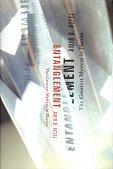Look. I read books about physics because I'm interested in physics, not because I'm interested in physicists. I don't care if Schrodinger had mistresses, or if Heisenberg never lost his love of Plato. This trend of trying to put a "human" face on science turns many popular science books into little more than blackboard soap operas. Just give me the science, dammit.
Okay, I feel better for that. So what about the science content, then? This is a story of quantum mechanics from its beginnings to the present day of the weirdness of quantum entanglement, where two or more particles, no matter how far apart, can influence each other with some kind of "spooky action at a distance". This isn't just some obscure theoretical result: our classical intuitions of locality and separability have been demonstrated, in many different laboratory experiments, to be at odds with this quantum reality.
The book takes a while to get going, not just because of the biographical thumbnail sketches. The history of what might be called conventional QM takes up about half the space before we get to the specific weirdness of entanglement.
I have difficulty in assessing how understandable this all might be to a lay reader. I have a background in physics, so know about the conventional QM, and read this book to get the recent entanglement story. Even so, I found some of the explanations tough going, mainly because they seem to miss out some of the technical detail. And the level of the technical detail is rather uneven. Consider this paragraph (an extreme example, I admit):
I wonder, is anyone who needs to be told what a complex number or a vector is, going to get anything out of sequences of elements in this space converge to elements of the space? Not that it's necessary to understand the latter for the rest of the discussion, fortunately, as it's never used again.
However, the chapter on three party entanglement does have some real meat in it, not covered in any other popular accounts of QM that I've come across. I know more, and understand more, after reading this book than I did before. So it is worth the effort. But the effort is rather more than it needs to be, I feel.
